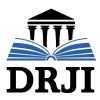Seismic risk evaluation of urban areas
Abstract
Full Text:
PDFReferences
Barbat, A. H. and Cardona, O. D., Vulnerability and Disaster Risk Indices from Engineering Perspective and Holistic Approach to Consider Hard and Soft Variables at Urban Level, IDB/IDEA Program on Indicators for Disaster Risk Management, http://idea.unalmzl.edu.co, Universidad Nacional de Colombia, Manizales. 2003.
Cardona, O. D., Estimación HolÃstica del Riesgo SÃsmico utilizando Sistemas Dinámicos Complejos. Doctoral Thesis, Universidad Politécnica de Cataluña, Barcelona, Spain. 2001.
Cardona, O. D. and Barbat, A. H., El Riesgo SÃsmico y su Prevención, Cuaderno Técnico 5, Calidad Siderúrgica, Madrid. 2000.
Cardona, O.D. and Hurtado J.E., “Modelación Numérica para la Estimación HolÃstica del Riesgo SÃsmico Urbano, Considerando Variables Técnicas, Sociales y Económicas†1er Congreso de Métodos Numéricos en Ciencias Sociales, CIMNE-UPC, Noviembre 2000, Barcelona. 2000.
Carreño, M. L., Cardona, O. D. and Barbat, A., Sistema de indicadores para la evaluación de riesgos, MonografÃas de IngenierÃa SÃsmica, Editor A.H. Barbat, MonografÃa CIMNE IS-52. 2005.
ICC/CIMNE, An Advanced Approach to Earthquake Risk Scenarios with Applications to Different European Towns, WP08 Application to Barcelona, RISK-UE Project. 2004.
Masure, P., Variables and indicators of vulnerability and disaster risk for land-use and urban or territorial planning, IDB/IDEA Program on Indicators for Disaster Risk Management, http://idea.unalmzl.edu.co Universidad Nacional de Colombia, Manizales. 2003.
Saaty, T. L., The Analytic Hierarchy process, McGraw-Hill Book Co., N.Y. 1980.
Saaty T. L., Decision making for leaders the analytic hierarchy process for decisions in a complex world, Pittsburgh RWS, USA. 2001.
UNDRO, Natural Disasters and Vulnerability Analysis, Report of Experts Group Meeting, Geneva. 1980.
Universidad de los Andes, Microzonificación SÃsmica de Santa Fe de Bogotá, Ingeominas, 17 volumenes, Bogotá. 1996.
Refbacks
- There are currently no refbacks.
Copyright (c) 2015 INTERSECTII / INTERSECTIONS
Indexed

